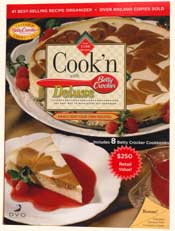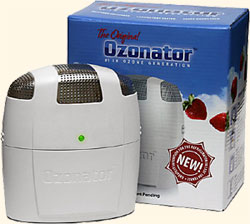|
I feel bad cleaning out the fridge and throwing away food that has gone bad, especially after living with the poverty-stricken people in the Dominican Republic for two years (Click here to see pictures).
That's why I was so excited to learn these two facts:
- Once cut, fresh produce, flowers and plants produce ethylene gas while aging. If allowed to accumulate, the ethylene accelerates the aging process.
- Intermittent use of ozone in refrigerated spaces has shown to be effective in reducing the rate of plant and produce aging by destroying ethylene thus reducing spoilage and extending the quality and shelf life of most produce.
The OzonatorT delays molding and decay of many foods you buy-including fruits and vegetables-helping them retain their freshness and flavor longer.
The average household throws away 150 lbs of produce per year, due to spoiling before use. The OzonatorT could save your family $300 in the first year, more than six times the purchase price!
The OzonatorT also eradicates odors in your refrigerator caused by many foods, including leftovers.
The OzonatorT promotes a clean and healthy environment inside your refrigerator. When produced in sufficient quantities, ozone is known to oxidize, and thereby destroy, many harmful germs and bacteria, molds, and yeast that may cause infection or incidents of disease and illnesses that can be transmitted from one family member to another by hand contact on foods, food containers and other hard surfaces inside your refrigerator.
Simple to Use
Step 1: Open the box and remove your Ozonator from the Styrofoam shield and its protective plastic covering.
Step 2: Press both tabs on the sides of the Ozonator at the same time to separate the top half of the Ozonator from the lower half (battery compartment). Insert four (4) "D" size batteries properly into the lower battery compartment of the Ozonator (Batteries not includes).
Step 3: Firmly reattach the lower half of the Ozonator to the top half. Once the two halves are securely attached, the light on the front of the Ozonator will turn solid green, indicating the Ozonator is activated and working properly.
Step 4: Place the Ozonator on the top shelf inside your refrigerator. Do not remove the Ozonator from your refrigerator during operation, except to replace the batteries.
How Safe is Ozone?
In 1997 the FDA deemed that ozone was "generally recognized as safe" as a disinfectant for foods. It can be used to increase crop yield, protect foods during storage and transit and for general sanitizing purposes.
The National Organic Standards Board also allows ozone use for processing.
According to the National Food Processors Association, ozone is very efficient in killing pathogens and spoilage organisms, and its use by the food industry will be welcomed as another tool to ensure the production of safe and wholesome foods.
The USDA says ozone can be applied to sanitize and can also help prevent spoilage during shipping.
The Science of Ozone:
Ozone is the natural way our planet purifies the air we breathe and cleans our environment. It helps make the air smell sweet and the sky blue. And, it is the most powerful disinfectant readily available to mankind. Ozone increases the storage life of foods by oxidizing some chemicals and by neutralizing ammonia and ethylene. Ozone is a safe and natural alternative for protecting perishable foods.
Scientific Advisors
Dr. Graham pioneered the application of Ozone as an Antimicrobial Agent in food processing, and Chaired a national panel of food safety experts in 1997 resulting in GRAS (Generally Accepted As Safe) Affirmation of Ozone for Use in Food Processing. This was followed by a Food Additive Petition presented to the Food and Drug Administration (FDA) in 2000, and approved in 2001. D.M.
Dr. Rice served as an Information Resource to the Electric Power Research Institute ("EPRI") panel of experts that declared ozone to be GRAS for direct contact with foods in June of 1997. Later, the EPRI commissioned Dr. Rice to write a Food Additive Petition (FAP) requesting FDA approval of Ozone as an Antimicrobial Agent for Direct Contact With Foods. That FAP was submitted in August 2000 and was approved by the FDA in 2001.
An independent study* proved the OzonatorT is "very effective" in eliminating "strong food odors" and protecting storage life of strawberries and other produce. The shelf life of cut Cantalope was more than doubled by storage with the Ozonator. Click here for more details.
|
|
Cook'n is Also Available At:
      
|
|
|
|













